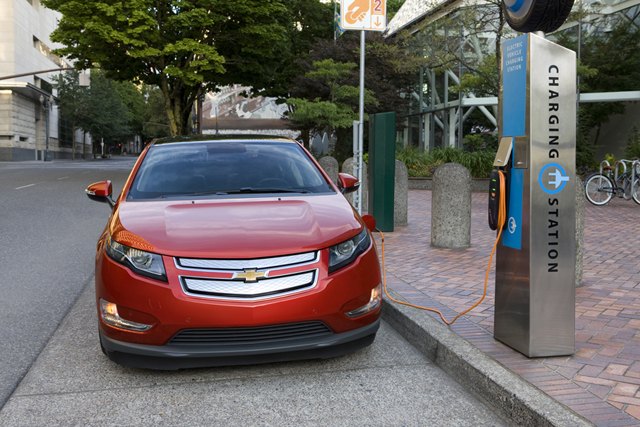- Acura
- Alfa Romeo
- Aston Martin
- Audi
- Bentley
- BMW
- Buick
- Cadillac
- Chevrolet
- Chrysler
- Dodge
- Ferrari
- Fiat
- Ford
- Genesis
- GMC
- Honda
- Hyundai
- Infiniti
- Jaguar
- Jeep
- Kia
- Lamborghini
- Land Rover
- Lexus
- Lincoln
- Lotus
- Lucid
- Maserati
- Maybach
- Mazda
- McLaren
- Mercedes-Benz
- MINI
- Mitsubishi
- Nissan
- Pagani
- Porsche
- Ram
- Rivian
- Rolls-Royce
- SMART
- Subaru
- Tesla
- Toyota
- Volkswagen
- Volvo
#SeriesHybird
The Mazda MX-30 R-EV Adds A Rotary, Turns An EV To A PHEV
A rotary engine aims to boost the driving range of Mazda’s low-range EV.
GM Admits Chevy Volt's Gasoline Engine Can Power the Wheels; So is It Still Special?
The Chevy Volt’s Voltec powertrain might not be as special as we’ve been led to believe. Then again, maybe it’s even more so.
After several initial reports about the car’s electric drive/hybrid system GM has issued a press release to clarify exactly how it works, stating that specifics were never given in the past as the automaker awaited patent approvals. After some initial tests by and interviews with a few of the auto industry’s buff books, it was recently revealed that contrary to all past claims by GM, the Voltec system is not a pure extended-range electric vehicle (ER-EV), but that under certain circumstances the 1.4-liter gasoline engine can actually power the wheels. In that sense, the Volt seems like little more than a plug-in Prius (parallel hybrid) with a larger and more powerful battery and electric motor.
That, however, is not entirely true either, as GM says the gasoline engine still cannot power the electric wheels on its own. In fact the gasoline engine can power the wheels, but only in addition to the electric motor powering the wheels and only under certain circumstances. One example GM gives is during certain types of extended-range driving (once the initial plug-in power has been depleted) the gasoline engine feeds a small amount of power to the wheels. “The resulting power flow provides a 10 to 15 percent improvement in highway fuel economy.”
What this all means is that the Volt first operates as an electric vehicle, and then it switches to be both a series hybrid (extended range electric vehicle) and a parallel hybrid (like the Prius) depending on the type of driving.
A pure electric vehicle it might not be in the strictest sense of the word, but a technological innovation it most certainly still is.
Official release after the jump:














